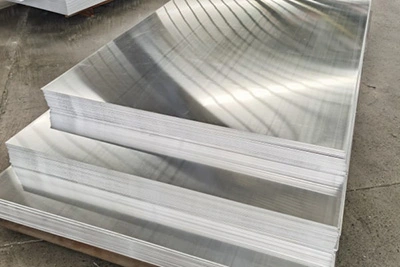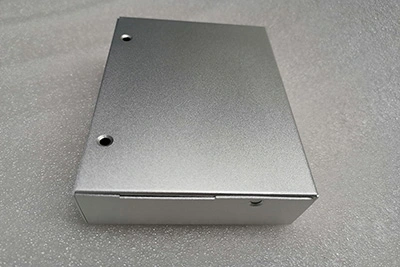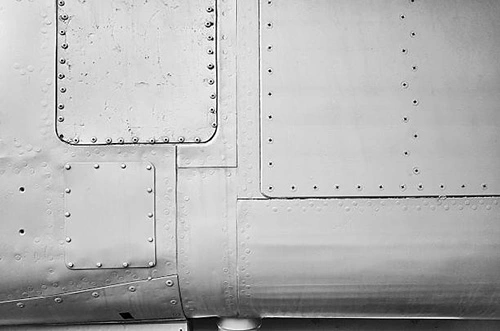5052 and 6061 aluminum are aluminum alloy types that are highly valued throughout the manufacturing industry. It is important to conduct thorough research before investing money in a specific aluminum grade. The final choice of alloy between 5052 aluminum and 6061 aluminum is highly dependent on formability, weldability, overall strength, corrosion resistance, etc. To fill this gap, this article will help you determine how these elements rank against each other when selecting 5052 aluminum and 6061 aluminum for your project.

Basic Introduction Of 5052 Aluminum And 6061 Aluminum

5052 aluminum grade
Aluminum 5052 is a member of the 5xxx series aluminum alloys. This alloy has been in use since 1930 and received its standard designation in 1954. Its advantages include good corrosion resistance, good weldability, and high fatigue strength. Due to its various benefits, aluminum 5052 is used in a wide range of applications. These applications include marine environments as they are corrosion resistant, construction, pressure vessels and fuel containers. This grade is the strongest non-heat treated aluminum grade commonly used. So, 5052 aluminum sheet or plate. In this way, sheet or plate combines excellent weldability and formability with increased strength. Density is slightly lower than aluminum -2.68 g/cm3(0.0968 lb/in). Elemental composition includes magnesium, chromium, etc. However, 5052 aluminum does not contain copper, which makes it less susceptible to corrosion by salt water. As a result, it has been widely used in the marine industry.
6061 aluminum grade
6061 aluminum is nearly ubiquitous, well known and widespread in manufacturing today. It is said to be the most versatile aluminum alloy, while retaining most of aluminum’s useful properties. This aluminum grade was developed in 1935 and was originally known as “Alloy 61S”.
6061 aluminum is a precipitation hardening alloy. This means that it is strengthened during treatments that involve a lot of activity. These activities include the distribution of particles within the metal’s massive structure, preventing its movement and increasing its durability and strength. The alloy of 6061 aluminum consists of aluminum, silicon and magnesium as the main components. Other alloying elements may include copper, iron, zinc, etc. 6061 aluminum is easily produced by many techniques. This gives aluminum 6061 excellent machinability and excellent mechanical properties.
What Is The Difference Between 5052 And Aluminum 6061?
5052 vs 6061 Aluminum: Alloy Series
5052 aluminum and 6061 aluminum exist in different forms. You can use these variants for comparison. This section differentiates each alloy by listing the variations in each alloy.
There are about 19 alloy variants of 5052 aluminum. They include:
- 5052-O Aluminum 5052-H24 Aluminum
- 5052-H38 Aluminum 5052-H18 Aluminum
- 5052-H39 Aluminum 5052-H19 Aluminum
- 5052-H34 Aluminum 5052-H14 Aluminum
- 5052-H36 Aluminum 5052-H16 Aluminum
- 5052-H32 Aluminum 5052-H112 Aluminum
- 5052-H322 Aluminum 5052-H12 Aluminum
- 5052-H26 Aluminum 5052-F Aluminum
- 5052-H28 Aluminum 5052-H111 Aluminum
- 5052-H22 Aluminum
Aluminum 6061 is available in pre-tempered and tempered grades. This includes:
- 6061-o Aluminum 6061-t6 Aluminum
- 6061-T1 Aluminum 6061-T62 Aluminum
- 6061-T4 Aluminum 6061-T651 Aluminum
- 6061-T42 Aluminum 6061-T6510 Aluminum
- 6061-T451 Aluminum 6061-T6511 Aluminum
- 6061-T4510 Aluminum 6061-T652 Aluminum
- 6061-T4511 Aluminum 6061-T89 Aluminum
- 6061-T51 Aluminum 6061-T94 Aluminum
5052 vs 6061 Aluminum: Chemical Composition
| Element | 5052 aluminum alloy | 6061 alüminyum alaşım |
| Al | 95.85 – 97.70% | 95.80 – 97.90% |
| Si | 0.00 – 0.25% | 0.40 – 0.80% |
| Zn | 0.00 – 0.10% | 0.00 – 0.25% |
| Mg | 2.20-2.80% | 0.8.-1.20% |
| Mn | 0.00 – 0.10% | 0.00 – 0.15% |
| Cr | 0.15 – 0.35% | 0.04 – 0.35% |
| Cu | 0.00 – 0.00% | 0.15 – 0.40% |
| Fe | 0.00 – 0.40% | 0.00 – 0.70% |
| Ti | – | 0.00 – 0.15% |
| Zr | – | – |
| Residue | 0.00 – 0.15% | 0.00 – 0.15% |
5052 vs 6061 Aluminum: Mechanical Properties
The mechanical properties of a material are the physical properties indicated when a force or impact is applied to the material. Its properties include: modulus of elasticity, electrical resistivity, cutting, material hardness, thermal conductivity, yield strength, shear strength, modulus of elasticity.
The modulus of elasticity can be expressed in terms of the stiffness of the alloy. It is quantified as a measure of how well an alloy material resists plastic deformation in the presence of an external force. Generally, materials with higher modulus of elasticity are more elastic. Alloys with higher modulus indices are preferred for forming applications. In addition to this, elastic materials do not break easily when deformed. When comparing 5052 aluminum with 6061 aluminum, it was found that 5052 aluminum has the highest elastic modulus (70.3 GPa). Therefore, if flexibility is a consideration when selecting an alloy for a project, 5052 aluminum is the best choice.
Conductivity
Conductivity is the degree to which a material conducts electricity and is the ratio of the current density to the electric field that causes the current to flow. In a comparison between using equal amounts of 5052 aluminum and 6061 aluminum, the electrical conductivity of 5052 aluminum is about 7% lower than that of 6061 aluminum. This shows that aluminum 6061 conducts electricity better than 5052 aluminum.
Cutting
For a number of reasons, 6061 aluminum falls short in terms of formability, but succeeds as a good machining material. In this context, machinability measures how well an alloy material responds to milling, die-cutting, turning or other machining operations. These machinability operations can be measured using various machinability scales. However, based on empirical testing, our scale is reported in a Likert scale fashion. The ratings are expressed in Excellent, Good, Fair and Poor ratings. In terms of machinability, 6061 aluminum was rated as “good” and 5052 as “poor”. This is because 6061 aluminum is more brittle and breaks more easily when machined, resulting in fewer chips. On the other hand, 5052 aluminum was rated poorly due to its elasticity. Using less precise cutters can result in large chip breakouts.
Material Hardness
The hardness of an alloy material depends on its resistance to indentation or penetration deformation. In this case, both aluminum alloys were shown to use different amounts of force to penetrate, with the result that Aluminum 6061 resisted penetration without deforming much under pressure. This means that aluminum 6061 is less prone to permanent deformation (193 MPa) than aluminum 5052 (276 MPa).
Heat Conduction
Aluminum alloys are, by standard, excellent thermal conductors. In this case, 5052 aluminum and 6061 aluminum are no exception. Thermal conductivity is a measure of how well a metal alloy can transfer heat. This applies when considering materials for heat exchangers, radiator, etc. 6061 aluminum has a higher thermal conductivity than 5052 aluminum. Therefore, 6061 aluminum is suitable for heat dissipation applications.
Akma Dayanımı
In material selection, the yield strength and ultimate strength of the material are central values. Together they represent the maximum stresses that cause both non-permanent (elastic) and permanent (plastic) deformation. Furthermore, yield strength is most important in static applications. This means that the selected material must not deform permanently, for example in structural applications. On the other hand, ultimate strength may be useful for some applications. 5052 aluminum exhibits a yield tensile strength of about 193 MPa and an ultimate tensile strength of 226 MPa. 6061 aluminum has a yield tensile strength of approximately 276 MPa and an ultimate tensile strength of 310 MPa. This shows that 6061 aluminum is stronger than 5052 aluminum.
Shear Strength
The shear strength of a material is referred to as the maximum load it can support before breaking to the axis of the fastener when applied at a right angle. In this regard, 5052 aluminum has a shear strength of 138 MPa (20,000 psi), while 6061 has a shear strength of 207 MPa (30,000 psi). This shows that 6061 aluminum has higher shear strength than 5052 aluminum.
5052 vs 6061 Aluminum: Corrosion Resistance Comparison
When aluminum alloys are exposed to air or water, they form an oxide layer. This oxide layer keeps the alloy from reacting with corrosive elements. The corrosion resistance of such materials depends on water/atmospheric conditions such as temperature, chemicals in the air, and chemical composition. 5052 aluminum does not contain traces of copper, so it has good stability under ambient conditions. It is less prone to corrosion when used in saltwater environments, which weakens and attacks copper metal composites. Therefore, 5052 aluminum is preferred over 6061 aluminum in chemical and marine applications.
In addition, pitting reactions occurred when both alloys were exposed to alkaline soils. However, 5052 and 6061 aluminum contain magnesium, so both are resistant to ammonia, ammonium hydroxide, and nitric acid. Alloy coatings can be used to form a protective layer of both alloys to prevent corrosion.
5052 vs 6061 Aluminum: Solderability Comparison
For weldability comparison, both alloys have excellent weldability. 5052 aluminum has the best weldability of all aluminum alloys. Its formability makes it ideal for manufacturing electrical enclosures. With 6061 aluminum, care must be taken in selecting the perfect weld filler metal. Post weld heat treatment and aging may be required to restore the weld to its original “T” condition.
5052 vs 6061 Aluminum: Weight Comparison
In any application, the weight-by-weight comparison of material selection is important. For example, in the aviation industry, lightweight materials are the first choice. In addition to being lightweight, the material must also have enormous strength to improve efficiency. By comparison, it was found that 6061 aluminum has the same density as pure aluminum (0.0975 lb/in3, 2.7 g/cm3). 5052 aluminum also has a slightly lower density (0.0968 lb/in3, 2.7 g/cm3) compared to pure aluminum. This means it is lighter than pure aluminum and can be used in applications where light weight is required. This is why 6061 aluminum is used in modern aircraft construction.
5052 vs 6061 Aluminum: Price Comparison
In the conventional space, the price of the same amount of 6061 aluminum is higher than that of 5052 aluminum. This expensive property can be attributed to the more technical processing techniques of 6061 aluminum. However, the price of these two alloys depends largely on the choice of specifications. This specification is highly dependent on the requirements of a particular project.
5052 vs 6061 Aluminum: Comparison of Common Applications
5052 aluminum application
5052 aluminum has a wide range of uses. Due to its composition, it offers additional benefits to industrial manufacturers. This property has made 5052 aluminum famous for its marine, electronic and chemical applications. In short, 5052 aluminum has a wide range of applications, including but not limited to:
- Electronic Housing
- Electronic Chassis
- Hardware Sign
- Hydraulic Pipe
- Ship Equipment
- Medical Equipment
- Pressure Vessel

6061 aluminum application
Due to the machinability of 6061, it is called structural aluminum alloy. Its formability allows it to be sheeted, rounded, squared, extruded, rolled or formed into any shape. Applications for the 6061 include:
- Automobile industry
- Welding Assembly
- Modern Aircraft Industry
- Subway platforms, stairs, floors, covers, walking distances and other construction industries.
- Consumer products such as bicycle frames and components, small work boats, fishing reels, diving tanks and dock walkways
- Electrical Appliances.
- Chemical Equipment
- Fastener
- Food industry, especially canned food
- It is used in the automotive industry due to its strength. It also helps improve performance by improving fuel efficiency and cost-effectiveness.

6061 aluminum has excellent machinability. Therefore, it is used for welding various aircraft components. Welding reduces this strength and can be corrected by heat treating after the welding process is complete. The alloy is also used in scuba diving equipment, moorings, marine firearms, fishing equipment, docks, hulls, etc.
Supplying High Quality Aluminum Alloy 5052 and 6061 in Zhengzhou City, Henan Province, China
Yongsheng is your reliable supplier of high-quality 5052 and 6061 aluminum stock products, including aluminum sheet, aluminum coil, aluminum foil, aluminum circle, aluminum strip, color aluminum, anodized aluminum, embossed aluminum, mirror aluminum, etc.


